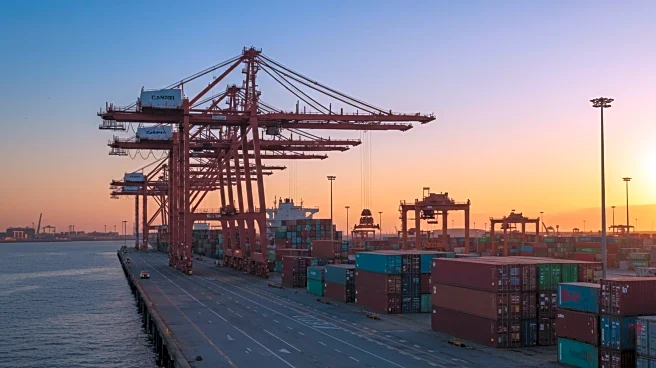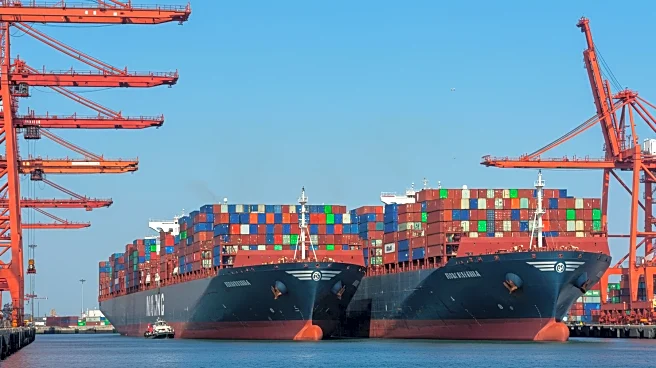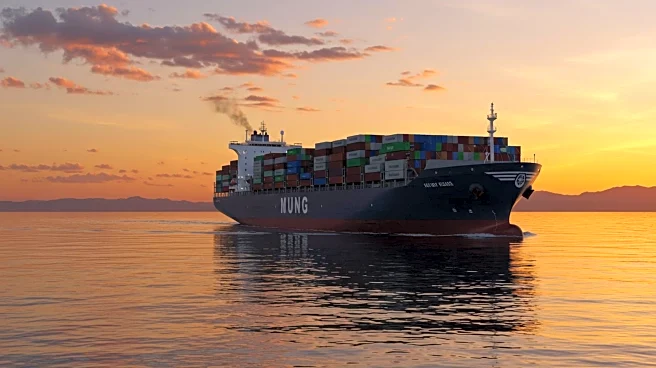What's Happening?
The Port of Long Beach experienced a record surge in import volumes in July, driven by a temporary pause in U.S. tariff hikes. Importers took advantage of this window to bring in goods from East Asia, resulting in nearly 950,000 TEU of cargo handled, including 470,000 TEU in imports. Despite the record numbers, the port anticipates that this surge is temporary and will not significantly boost annual performance. The increase in imports was largely due to retailers stocking up on goods purchased at lower costs during the tariff pause, which is set to expire on November 10.
Why It's Important?
The surge in imports at the Port of Long Beach highlights the impact of trade policy on supply chain dynamics and port operations. The temporary pause in tariffs provided a strategic opportunity for retailers to reduce costs, influencing import patterns and inventory management. This development underscores the importance of stable trade policies for economic planning and forecasting. The port's record performance also reflects broader trends in U.S.-China trade relations, which have significant implications for global supply chains and economic stakeholders.
What's Next?
As the tariff pause expires, the Port of Long Beach expects a decline in cargo volumes, with forecasts indicating a 10 percent drop in the second half of 2025. Retailers and importers will need to adjust their strategies in response to changing trade policies, potentially affecting inventory levels and pricing. The port will continue to monitor trade developments and leverage its digital tracking tools to optimize operations and manage fluctuations in cargo volumes.












